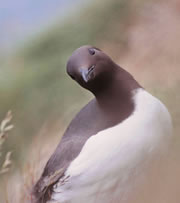 Aberdeen Art Gallery
Aberdeen Art Gallery Aberdeen Exhibition and Conference Centre
Aberdeen Exhibition and Conference Centre Aberdeen Harbour
Aberdeen Harbour Aberdeen Maritime Museum
Aberdeen Maritime Museum Aberdeen Visitor Information Centre
Aberdeen Visitor Information Centre Aberdeen Watersports
Aberdeen Watersports Balmedie Beach and Country Park
Balmedie Beach and Country Park Blairs Museum
Blairs Museum Charlie Chalk's Fun Factory
Charlie Chalk's Fun Factory Copinsay Nature Reserve RSPB
Copinsay Nature Reserve RSPB  Cruickshank Botanic Garden
Cruickshank Botanic Garden Duthie Park and David Welch Winter Gardens
Duthie Park and David Welch Winter Gardens Gallery Heinzel
Gallery Heinzel Glover House - CLOSED
Glover House - CLOSED Hazlehead Park
Hazlehead Park Heads of Ayr Farm Park
Heads of Ayr Farm Park His Majesty's Theatre
His Majesty's Theatre Marischal Museum
Marischal Museum Music Hall
Music Hall Provost Skene's House
Provost Skene's House Satrosphere Science Centre
Satrosphere Science Centre St Andrews Cathedral Church
St Andrews Cathedral Church The Gordon Highlanders Museum
The Gordon Highlanders Museum The Lemon Tree
The Lemon Tree University of Aberdeen Natural History Centre
University of Aberdeen Natural History Centre University of Aberdeen Zoology Museum
University of Aberdeen Zoology Museum
The reserve comprises the uninhabited main island of Copinsay, three smaller islets of Corn Holm, Ward Holm, Black Holm and the Horse of Copinsay.
Copinsay is mainly covered in grass, with 10 ha of arable, hay and pasture managed as cover for corncrake. There are fine colonies of oysterplant and sea aster on the islands. More than 1,000 pairs of fulmars nest on Copinsay, which has nearly a mile of vertical cliffs up to 76 metres high.
There is a vast seabird colony on the cliffs, with around 20,000 guillemots, 700 razorbills, 600 puffins and about 4,500 pairs of kittiwakes. Black guillemots and shags also nest here and there are great black-backed gull colonies. Several hundred Arctic terns may nest on the islands and there are eiders, twites, wheatears and ravens on Copinsay in the breeding season.
In autumn, a colony of around 2,000 grey seals comes ashore to pup. Copinsay was bought as a memorial to the naturalist James Fisher.
No Comments Yet - Why not be the first to leave a comment
Every effort is made to make sure that all the information is correct but we strongly recommend that you call Copinsay Nature Reserve RSPB before you set off on your day out to confirm opening times and admission prices.
Please also note that the position on Google maps for Copinsay Nature Reserve RSPB is a rough estimate using their postcode in the database and might be slightly out.
It may also be worth clicking the web link for Copinsay Nature Reserve RSPB to see if there are any special events coming up or currently on.